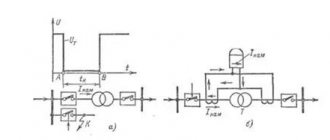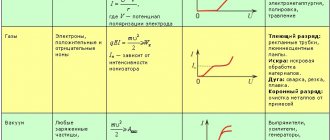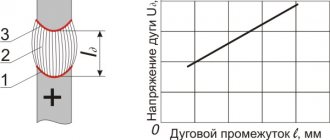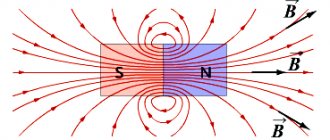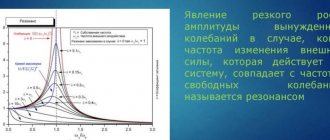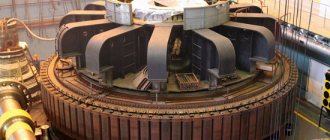Reasons for appearance
Charged particles begin to move due to the action of various power sources. These include batteries, accumulators, generators and other devices capable of converting all kinds of energy into electrical energy. During these transformations, the law of conservation of energy is clearly manifested. The particles begin to move at the moment when the electrical circuit is closed, which leads to the appearance of an electric field in the conductor.
It is this that has a certain effect on free particles. During research, scientists found that every source of electric current has an electromotive force (EMF) . It should be remembered that electrons do not appear due to the power source, but are present in the conductor material. They begin to move under the direct influence of the electric field, since they are not connected by atomic bonds and are free.
An example is a closed system of pipes in which water is pumped by a pump. Depending on the size of the pipes and the number of branches, the liquid will move through them at different speeds.
All these properties are inherent in the flow of electric current, which varies depending on the cross-section of the conductors.
Necessary conditions for maintaining electric current in the circuit
Above are three conditions for the existence of electric current in a closed circuit. They need to be considered in more detail.
Free charge carriers
The first necessary condition for the existence of electric current is the presence of free charge carriers. Charges do not exist separately from their carriers, so we must consider particles that can carry charge.
In metals and other substances with a similar type of conductivity (graphite, etc.), these are free electrons. They interact weakly with the nucleus and can leave the atom and move relatively unhindered inside the conductor.
Also, free electrons serve as charge carriers in semiconductors, but in some cases they talk about “hole” conductivity of this class of solids (as opposed to “electronic”). This concept is needed only to describe physical processes; in fact, the current in semiconductors represents the same movement of electrons. Materials in which electrons cannot leave the atom are dielectrics. No current occurs in them.
Direction of electric current
It is necessary to understand that electric current does not cause every movement of charged particles. Under the influence of heat, electrons also begin to move, but their movement is chaotic and has no specific direction. If you add an electric field to the thermal effect on the conductor, then the electrons will begin to move with a certain direction.
The direction of movement of particles forming an electric current depends on their charge:
- positive ones move from “plus” to “minus”;
- negative - from “minus” to “plus”.
Counter movement of particles is observed in electrolytic solutions and gases. Therefore, it is extremely important to determine exactly what the current direction of the current in the circuit is. As a result, it was decided that the movement of positive particles is the direction of electric current . However, this statement does not coincide with reality when we talk about metal conductors.
The fact is that charge transfer in them occurs due to the movement of negatively charged electrons. At the same time, it is known for sure that they move from the minus to the positive pole. In this case, we have to consider the direction of the current to be opposite to the movement of charged particles.
Despite some inconvenience, this rule clearly states what is taken to be the direction of electric current and where it flows.
Why was the movement from the positive pole to the negative pole taken as the direction of the current?
Such confusion in this matter arose for one simple reason. The fact is that the phenomenon of electric current was discovered earlier than more detailed knowledge of the structure of the atom. At that time, it was believed that the atom itself was indivisible; there was no information about electrons and ions.
Therefore, it was believed that the current could have two different directions. But they could not explain why this happened.
There were even suggestions that there were two different types of current. These species could neutralize each other upon contact. In fact, the body simply received the same amount of positive and negative charges. It became electrically neutral. So the issue here was not at all about some type of current.
As a result, the famous French scientist Andre Ampere (you will learn about him in more detail in the following lessons) convinced the scientific community to accept one of the two directions as the main one. And the choice fell on the direction from a positive current source to a negative one (Figure 2).
Figure 2. Direction of current and movement of charged particles
Movement of particles in various conductors
Electric current can occur not only in metals, but also in other substances. Moreover, they can be in different states of aggregation. To better understand the topic, it is worth indicating the movement of current in liquids, gases and solids:
- Metals have a large number of free electrons, which are the main source of electric current.
- Electrolytes are liquids that can conduct electric current. This group of conductors includes solutions of salts, acids, and alkalis. Once in water, the molecules of all these substances are split into ions - charged individual atoms or groups of them. Ions can have a positive (cations) or negative (anions) charge. It is due to their directional movement that an electric current arises in solutions.
- In plasma and gases, electric current causes the movement of positive ions and electrons that have a negative charge.
- In a vacuum, current appears due to electrons escaping from the surface of the metal.
The current that arises as a result of the movement of charged particles inside bodies relative to a specific medium is called conduction current.
There is also a definition of convection electric current, which is the movement of macroscopic particles. An example of convection current is raindrops during lightning.
How does electric current flow in reality?
The existence of the modern world cannot be imagined without electric current. It ensures the functioning of a huge variety of devices and electrical appliances, as well as entire systems. The concept of “electric current” helps to draw an analogy between this phenomenon and the flow of liquid, which gives this term some clarity. Electric current flows due to the fact that the electromagnetic field moves along a conducting medium at a speed approximately equal to the speed of light. This movement goes in the direction from greater potential to less, that is, from “+” to “-”. At the same time, charge carriers move slightly slower and in different directions (depending on the material).
What are the types of charge carriers?
There are two types of charge carriers - negative and positive. Ions and electrons can have a charge with a minus sign, but generally only ions have a positive charge. Negative charges move in the direction of greater potential, and positive charges move in the opposite direction. This movement leads to the appearance of electric current. This uncertainty is eliminated in the generally accepted rule, which states that current always flows from “+” to “-”, regardless of the type of charges.
How do charges move in metals?
Almost all metals used in electrical engineering do not contain ions because they are in a solid state. They are characterized by electronic type conductivity. This means that free electrons, acting as charge carriers, move in the direction opposite to the current.
Metals have relatively low electrical resistance. If there is no potential difference, the electric field strips electrons from their orbits. For this reason, at a small potential difference, a significant number of charge carriers appears.
How do charges move in semiconductors?
Semiconductors have much lower conductivity than metals (at room temperature). There are two types of semiconductors - n and p. Semiconductors of the first type contain an excess of electrons. When they go to p-type, they become deficient. The remaining electrons move without much difficulty to their possible places inside the atom. This is equivalent to the movement of charges with a “+” sign. Since electrons in semiconductors are weakly bound to atoms, as the temperature increases, the number of unbound electrons changes and the conductivity of the semiconductor increases rapidly. Conclusion: in semiconductors, charges can move in the direction of current flow or in the opposite direction (p- and n-type, respectively).
How do charges move in gases and liquids?
In liquids and gases, charge carriers are ions, which can be negative (so-called cations) and positive (anions). If the number of cations is greater, they move in the opposite direction of the current. If anions predominate, their movement coincides with the direction of the current.
Effect of current
Knowing what is taken to be the direction of the current, it is worth finding out its effect. The appearance of electric current can be determined by the readings of special instruments. However, they are not always at hand. In such a situation, the presence of electric current can be judged by the following phenomena:
- Thermal. The movement of charged particles leads to heating of the conductor material. It is this phenomenon that is used in the operation of lighting lamps or heating devices.
- Magnetic. If there is current in the circuit, it will create a magnetic field. You can check this fact using a compass: if you bring it to the wire, the arrow will turn perpendicular to the conductor. The magnetic field created by the current can be strengthened by wrapping an iron rod with wire. The result is an electromagnet.
- Chemical. If current flows in electrolytes, the chemical composition of the solution will change. For example, in a CuSO4 solution, electric current arises due to the movement of positive Cu ions. They move to the negative electrode, which will eventually become coated with a layer of copper.
Today it is difficult to imagine human civilization without electricity. Many scientists tried to establish the nature of these phenomena even before the discovery of electrons. The first physicist to hypothesize that there are two types of charges was Benjamin Franklin.
After the discovery of electrons, the inconsistency of Franklin's hypothesis was discovered, but scientists decided that the direction of the electric current would continue to be determined.
Official electricity
Between 1881 and 1904, several meetings of the International Electrical Congress (IEC) were held, which established a number of common electromagnetic units such as the ohm, volt, farad and coulomb. It was during this period that the official definition of electric current was created.
With the discovery of the electron and ions, everything became clear, and Franklin's theory of electric fluid was buried. It has been proven that electricity consists of small single charges that can move under the influence of voltage. Even though the electrons in the wires flowed from negative to positive, and the ions in solutions flowed in both directions, all these particles had one thing in common - they were charged with the same value. Thanks to this, there was no need to create several different definitions, and all these phenomena were connected by one general term: the ordered flow of electric charge or electric current.
The unit of measurement for electric current is the ampere, and devices for measuring current are called ammeters. The first ammeter was in the form of a silver plate, which was immersed in a solution of silver nitrate. Under the influence of the flowing current, silver fell out of solution and settled on the plate. By weighing the plate before and after, the scientists determined that one ampere of current corresponds to the deposition of 0.001118 grams of silver per second. This definition has changed over the years, and today one ampere is the flow of charge and the value of one coulomb in one second.
